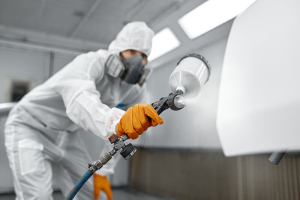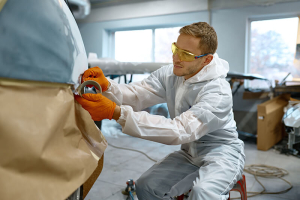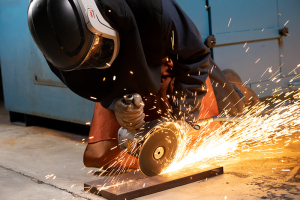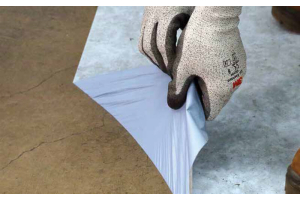The Engineering & Design Professional’s Guide to Structural Adhesives
The Engineering & Design Professional's Guide to Structural Adhesives
In today's world, successful new products demand advancements in design, manufacturing processes and end-use performance. When it comes to creating next-generation products, industrial engineering and design professionals in aerospace, automotive and other industries rely on structural adhesives for designing beyond the limits of mechanical fasteners. To support pros like you in understanding the true advantages of adhesives and how to best approach the selection process, we're offering this helpful guide with expert insights and valuable guidance.
Making the Case for Structural Adhesives
Eliminating mechanical fasteners provides a wide range of benefits for all stages of product development, and improving your production process is a must if you want to stay ahead of the competition. That means using advanced adhesive formulations to create durable bonds, even on challenging materials or in extreme conditions.
Simply put, designing and building products with optimal structural adhesives, like 3M's Scotch-Weld™ product, helps drive product success. How? Here are a few important ways:
- Improved aesthetics: Improve product appearance with invisible joints and smoother bond lines, reduce weight and noise, enhance corrosion and fatigue resistance, and more.
- Design freedom: Join composites to metal, build with hard-to-bond plastics and use thinner, lighter-weight materials.
- Accuracy and ease: Dispense by hand or with automated equipment, and choose from a wide range of viscosities and flow rates.
- Enhanced productivity: Reduce labor and material costs, build faster with minimal surface prep and match cure rates to your process needs.
- Strong, flexible bonds: Adhesives bond and seal simultaneously, eliminate stress concentration and absorb shock and vibration for durable bonds.
- Increased durability: Resist chemicals, environment, galvanic corrosion, fatigue and material separation along edges or corners.
Disproving the Myths About Structural Adhesives
We know there are plenty of myths and misconceptions around structural adhesives floating around. Let's get right down to four of the most common ones, and bring the real truth to the surface.
- Myth: "Structural adhesives don't hold."
Truth: Scotch-Weld(TM) Structural Adhesives can outperform traditional attachment methods like screws, rivets and spot welds. - Myth: "Holding pieces together is all that matters."
Truth: Proper planning can improve performance. Evaluating your entire process could influence the bonding solution you should choose for maximum benefit. - Myth: "I've tried one so I've tried them all."
Truth: Different adhesives offer different properties. The bonding continuum offers different adhesive options, strengths, viscosities, open times, resistance properties, and flexibility and rigidity levels. - Myth: "All structural adhesives are epoxies."
Truth: Not all structural adhesives are made the same. Beyond just epoxies, there's a variety of product families, chemistries, sizes and configurations.
Narrowing Down Your Adhesive Choices
With so many options out there, it can be overwhelming to choose the right adhesive for the job. Begin by narrowing down your choices to a few possibilities for further evaluation. This requires a closer look at a few specific areas of consideration:
- Type of materials being bonded: Structural adhesives work by adhering to the top surface of the bonded parts, so it's important to know the exact material and condition on those surfaces. For metals, will the adhesive be applied to bare metal, or will there be a paint or coating on the surface? For plastics, exactly which base resin? Could there be residual release agents on the surfaces used for mold release?
- Preferred cure speed: The chosen structural adhesive must have enough work life (open time, pot life) to allow proper mixing and application of the adhesive and assembling of the bonded parts. Smaller assemblies or shorter cycle time production processes may be able to use a faster curing adhesive with a work life of only five minutes or less, while larger assemblies that require alignment and clamping will probably need a work life of 20 minutes or more.
- Required surface preparation: Structural adhesives generally prefer clean, rough, dry surfaces for highest bond strength. This typically means either light abrasion and solvent cleaning of the surface, or solvent cleaning followed by chemical etching or application of a primer. Adhesion tests should be performed to determine the adequate surface preparation for a specific application.
- Types of joints: Joint designs that put the adhesive bond under shear, tension or compression forces will provide the highest strength. Designs that tend to apply peel or cleavage forces to the adhesive, where the applied stresses are not distributed over the entire bond area, will have lower bond strength, but the bond may still be sufficient for the needs of the application. In addition, optimum bond line thickness typically ranges from 0.005" to 0.020". The adhesive qualification process should always include testing of prototype assemblies to ensure the adhesive will provide enough performance.
- Use and application: Structural adhesives come in many forms, including low-viscosity liquids and non-sag pastes, one- and two-component formulations, short and long work lives, and various package sizes and shapes. Most two-part structural adhesives are available in both bulk containers and convenient, easy-to-use cartridge mixing systems.
Identifying the General Characteristics of Each Type
So, if all structural adhesives are not created equal, what are the defining characteristics of each type? Every structural adhesive provides at least 1,000 psi of overlap shear strength to aluminum, but the different adhesive chemistries have various properties:
- Epoxy adhesives come in both two-part adhesives (that cure upon mixing the two components) and one-part adhesives (that cure with temperature). They generally have the highest strength and overall performance. They also provide the best resistance to high temperatures, solvents and outdoor weathering. They adhere well to metals, woods and concrete, and the flexible epoxy adhesives also bond to some plastics and rubbers. Epoxy adhesives usually require clean, abraded surfaces to obtain maximum bond strength.
- Acrylic adhesives are two-part adhesives that provide excellent bond strength and durability, although slightly lower than epoxy adhesives. However, they have several features that make them easier to use in many applications and manufacturing processes. These benefits include a much faster cure speed, higher tolerance for oily or unprepared bonding surfaces and the ability to bond a wide variety of materials, including nearly all plastics. Newer acrylic adhesive formulations are room temperature stable with a long shelf life, and some have much lower odor than regular acrylic adhesives.
- Urethane adhesives are two-part adhesives that are relatively flexible when cured, and therefore tend to have excellent impact resistance and good adhesion to most plastics. They also bond well to woods, concrete and rubbers, but they tend to have reduced resistance to solvents and high temperatures. Uncured adhesive components are sensitive to moisture.
- Cyanoacrylate adhesives (instant adhesives) are one-component, lower viscosity liquids that cure extremely quickly with just contact pressure and surface moisture. They adhere well, with thin bond lines, to plastics, metals and rubbers. With the use of primers, they can also adhere to low surface energy plastics and elastomers. They tend to have low flexibility, peel strength and impact resistance compared to other structural adhesives. They are generally used for applications such as gasket bonding and smaller assemblies.
- Anaerobic adhesives are one-part adhesives that cure on active metal surfaces when oxygen gets excluded from the bond line. These products keep your factory running efficiently, reducing maintenance and leakage. They do not bond well to glass, plastics or rubbers, and are primarily used for applications such as locking threads and sealing pipe connections.
- PUR adhesives (Polyurethane-reactive adhesives) are one-part adhesives that apply like a hot melt, but cure with ambient moisture for near structural strength bonds. Fast set times and build strength over the next 24-48 hours can reach as much as 1,000 psi in overlap shear strength. They are flexible and resistant to temperature extremes and most solvents. Most commonly used in bonds where at least one substrate contains or transmits moisture (such as wood or plastic).
Selecting the Right Structural Adhesive Products
The simplest way to find the structural adhesives that will work best for you and your needs is to use 3M's selection tool, which enables you to compare product performance via the technical filter criteria. These filters will help you find adhesive solutions that you can evaluate for use in your project. Search 3M product IDs, review technical data sheets, or download PDFs to guide your current project.
For more detailed information about how our selection of 3M™ Scotch-Weld™ Structural Adhesives can support your design and engineering efforts, visit our product pages or check out this video: 3M Industrial Product Expert, Steve Bannister, demonstrates the variety of epoxy adhesives from the 3M™ Scotch-Weld™ Epoxy Adhesive series and as always reach out to our team of experts.








